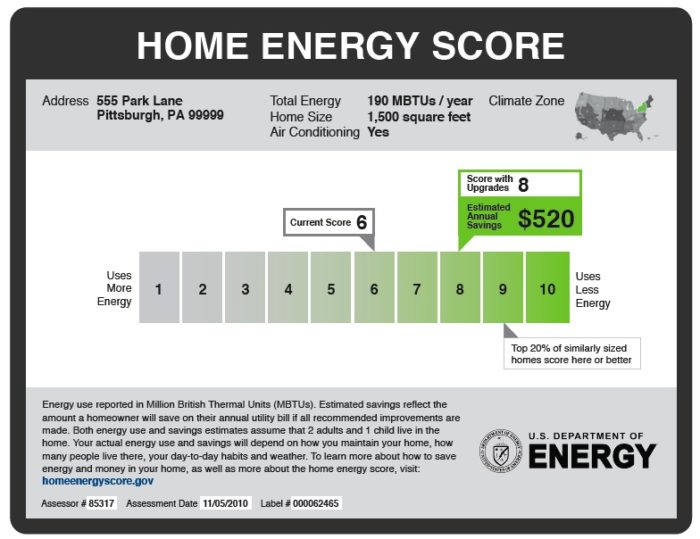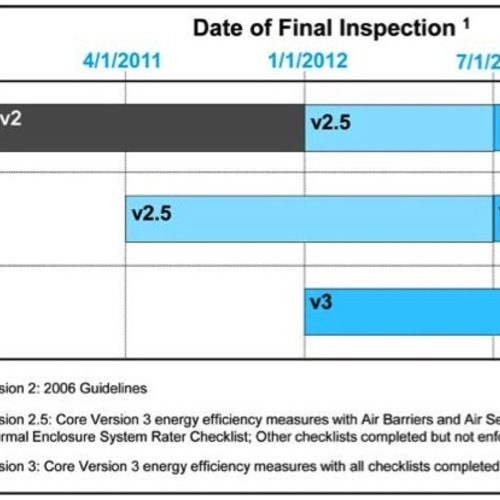Image Credit: Department of Energy
Image Credit: Department of Energy This list of basic energy conservation tips is included with each Home Energy Score. The Home Energy Score's customized list of recommended improvements are designed to help understand retrofit possibilities and their benefits.
As noted in an item posted earlier this week, energy efficiency upgrades can be some of the toughest sells in home remodeling. Fortunately, that concern is not lost on the Department of Energy, Vice President Joe Biden’s Middle Class Task Force, or a White House brainstorming group called the Council on Environmental Quality, which last fall collaboratively rolled out the Recovery Through Retrofit Report, a series of strategies for making the benefits of retrofits easy for consumers to understand and justify financially, and a basic road map for training workers to uniform standards for both energy efficiency audits and upgrades.
Those strategies started to take shape in the real world this week with the launch of two DOE initiatives. One is the Home Energy Score (HES) pilot program, which is intended to provide consumers with straightforward information about their home energy efficiency, including a score from 1 to 10, with10 indicating net-zero-energy performance; potential savings on energy costs after an upgrade; and a customized list of upgrade recommendations.
The DOE also released the Workforce Guidelines for Home Energy Upgrades, a comprehensive set of voluntary guidelines for residential energy efficiency specialists designed to help them deliver high-quality work and to help expand worker certification and training programs nationwide.
Awaiting public comment, and field-testing HES
Workforce Guidelines covers technical standards and codes, job-task analyses for various energy efficiency improvements, and the minimum skills workers would need to perform high-quality work. The guidelines will be available for public comment through January 7. (Click here for access to a PDF of the Workforce Guidelines and a link to the public comment page.)
HES, meanwhile, will be rolled out as a pilot program in several locations across the country, with local governments, utilities, and nonprofit partners tracking how homeowners respond to the service – in particular, whether they invest in energy efficiency retrofits. The pilot testing is expected to conclude in the late spring 2011.
One of the nonprofit partners in the pilot program, green home certifier Earth Advantage Institute, based in Portland, Oregon, says it will be comparing the results of the HES tool with those of the institute’s own Energy Performance Score, a performance rating system that, EVI notes, is now in use on a voluntary basis for new homes in Oregon and existing homes in a 5,000-home pilot program in Seattle, and in a 1,200-home pilot in Bellingham, Washington. EVI adds that its HES findings will be applied to its program in Seattle.
The HES pilot program will be conducted in the following states and municipalities: Charlottesville, Virginia; Allegheny County, Pennsylvania; Cape Cod and Martha’s Vineyard, Massachusetts; Minnesota; Omaha and Lincoln, Nebraska; Indiana; Portland, Oregon; South Carolina; Texas; and Eagle County, Colorado.
Weekly Newsletter
Get building science and energy efficiency advice, plus special offers, in your inbox.















0 Comments
Log in or create an account to post a comment.
Sign up Log in